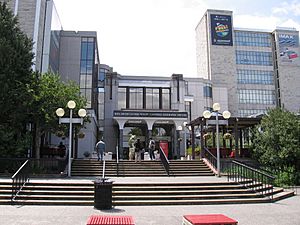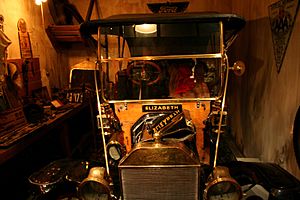Royal British Columbia Museum facts for kids
 |
|
| Established | 1886 |
|---|---|
| Location | Victoria, British Columbia |
| Type | Provincial history museum and archives |
| Collection size | Over 7 million |
| Visitors | 770,000 (2017) |
| Public transit access | Bus routes 3, 27, 27x, 28, 30, 31 |
The Royal British Columbia Museum, also known as the Royal BC Museum, is a famous history museum in Victoria, British Columbia, Canada. It was founded way back in 1886. The museum got its "Royal" title from Queen Elizabeth II in 1987.
The museum is home to three main exhibits, called permanent galleries. These are the Natural History Gallery, the Becoming BC Gallery, and the First Peoples Gallery. Inside, you can find over 7 million items, from animal specimens to historical objects.
Besides its own amazing collections, the museum also hosts special exhibitions from around the world. In the past, it has shown artifacts from the RMS Titanic, inventions by Leonardo da Vinci, and treasures from Ancient Egypt. The museum is also home to an IMAX movie theatre that shows both educational and popular films.
You can find the museum right next to Victoria's beautiful Inner Harbour. It's located between the famous Empress Hotel and the Legislature Buildings.
Contents
History of the Museum
The Royal BC Museum was started in 1886. At the time, important people in British Columbia were worried. They saw that historical items, especially those made by First Nations people, were being taken out of the province. They wanted to create a museum to protect BC's unique history and nature.
The first museum was just a single room. Its first curator, a nature expert named John Fannin, even donated his own collection of preserved birds and animals to get it started.
Over the years, the museum grew and needed more space. In 1968, a brand new building was opened for the museum, which is where it still is today. The project was part of Canada's 100th birthday celebration.
One of the museum's most famous items is a colorful Rolls-Royce car that once belonged to John Lennon of The Beatles. It was bought by a Vancouver businessman, Jim Pattison, who then donated it to the museum.
The Cultural Precinct
The museum is part of a special area called the "cultural precinct." This is a neighborhood near the Inner Harbour filled with important historical buildings and parks.
Some of the places in the cultural precinct include:
- The BC Archives, where historical documents are kept.
- Helmcken House, one of the oldest houses in British Columbia.
- Thunderbird Park, which has a stunning collection of totem poles.
- Wawadit'la, a traditional "big house" built by the famous Kwakwaka'wakw artist Chief Mungo Martin and his family.
Permanent Galleries
The museum has three main galleries that are always open. They explore the nature, people, and history of British Columbia.
First Peoples Gallery
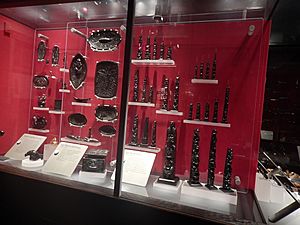
This gallery on the third floor is dedicated to the history and culture of the First Nations of British Columbia. It has a huge collection of artifacts, including beautiful totem poles, traditional clothing, and ceremonial masks.
One of the highlights is a full-sized long house that belonged to a Kwakwaka'wakw chief. You can walk inside and imagine what life was like. The gallery also features amazing carvings by the famous Haida artist Bill Reid.
The museum works with First Nations communities to make sure their history is told correctly. In recent years, the museum has returned important artifacts to their original communities, like a totem pole that was returned to the Nuxalk Nation in 2023.
Becoming BC Gallery
This gallery takes you on a journey through British Columbia's more recent history. The main attraction is "Old Town," a life-sized model of a street in Victoria from the late 1800s and early 1900s. You can walk on cobblestone streets and peek into a silent movie theatre, a hotel, and a train station.
The gallery also shows how industries like forestry, fishing, and mining shaped the province. You can even walk through a replica of a mine shaft. Another popular display is a large model of the HMS Discovery, the ship sailed by Captain George Vancouver when he explored the coast.
Natural History Gallery
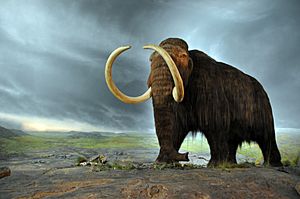
The Natural History Gallery on the second floor explores the diverse landscapes and animals of British Columbia, from today all the way back to the Ice Age.
The most famous display is a life-sized model of a woolly mammoth! You can also see fossils, taxidermy (preserved animals), and a tide pool with live sea creatures like crabs and starfish.
A newer part of the gallery teaches visitors about climate change and how it affects BC's environment. There is also a fun exhibit called the Ocean Station, which is designed to look like an old-fashioned submarine and has a large aquarium inside.
Museum Collections
The museum collects objects that tell the story of British Columbia's natural and human history.
Human History
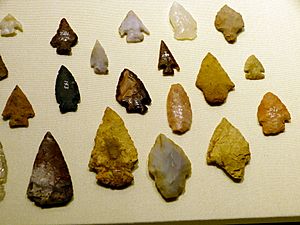
This department collects items that show the cultural, social, and economic history of the people of BC.
- Archaeology: This collection has over 192,000 artifacts, including the largest collection of First Nations archaeological items in the province.
- Ethnology: This collection includes over 14,000 ceremonial and everyday objects from different First Nations groups across BC.
- Modern History: This collection has 165,000 items from recent history, like furniture, clothing, and tools from old industries. One interesting display is a recreation of a historic Chinese Herbalist Shop.
Natural History
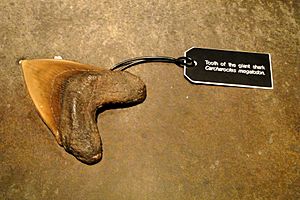
This department collects and studies the plants, animals, and fossils of British Columbia.
- Palaeontology: The museum has about 55,000 fossils. Some are 600 million years old!
- Botany: This collection has over 200,000 plant specimens. The museum also has a garden with about 400 different native plants.
- Zoology: The museum has large collections of insects, fish, amphibians, reptiles, birds, and mammals from British Columbia. These collections help scientists study and protect the province's biodiversity.
Caring for the Collections
The museum has a special team of conservators whose job is to protect and preserve all the artifacts, documents, and specimens. This department, called Conservation Services, was one of the first of its kind in Canada.
Conservators use science to care for very old and fragile items. For example, they helped preserve ancient totem poles at the Ninstints UNESCO World Heritage Site. They also worked with the Champagne and Aishihik First Nations to study the remains of a person found frozen in a glacier, who is now known as Kwäday Dän Ts'ìnchi, or "Long Ago Person Found."
Learning at the Museum
The Royal BC Museum offers many programs for visitors of all ages. It runs workshops, lectures, and guided tours for schools and families. There are also special events throughout the year, like a Carol Along with the Carillon at Christmas time.
See also
- List of Canadian organizations with royal patronage


